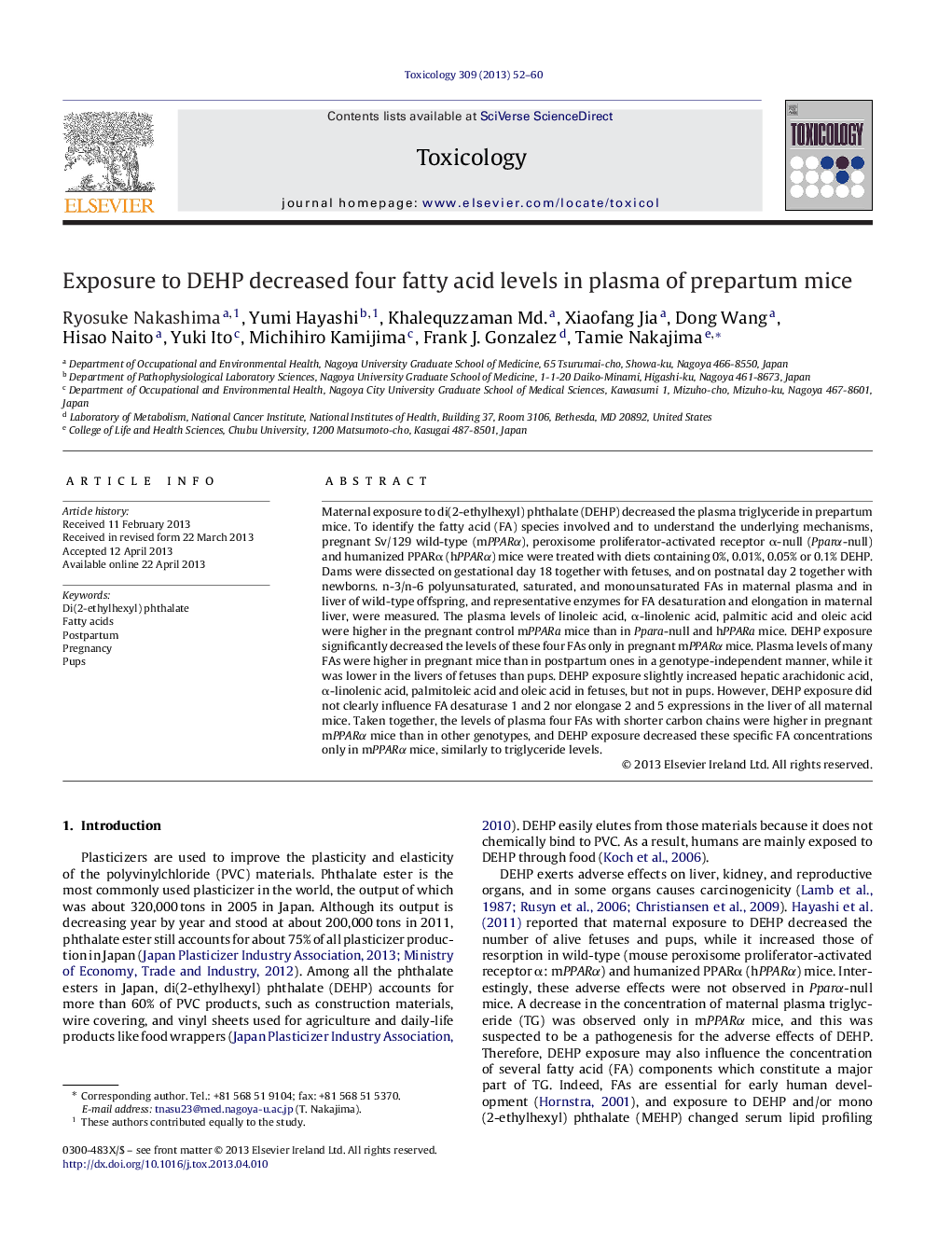| Article ID | Journal | Published Year | Pages | File Type |
|---|---|---|---|---|
| 5859455 | Toxicology | 2013 | 9 Pages |
Abstract
Maternal exposure to di(2-ethylhexyl) phthalate (DEHP) decreased the plasma triglyceride in prepartum mice. To identify the fatty acid (FA) species involved and to understand the underlying mechanisms, pregnant Sv/129 wild-type (mPPARα), peroxisome proliferator-activated receptor α-null (Pparα-null) and humanized PPARα (hPPARα) mice were treated with diets containing 0%, 0.01%, 0.05% or 0.1% DEHP. Dams were dissected on gestational day 18 together with fetuses, and on postnatal day 2 together with newborns. n-3/n-6 polyunsaturated, saturated, and monounsaturated FAs in maternal plasma and in liver of wild-type offspring, and representative enzymes for FA desaturation and elongation in maternal liver, were measured. The plasma levels of linoleic acid, α-linolenic acid, palmitic acid and oleic acid were higher in the pregnant control mPPARa mice than in Ppara-null and hPPARa mice. DEHP exposure significantly decreased the levels of these four FAs only in pregnant mPPARα mice. Plasma levels of many FAs were higher in pregnant mice than in postpartum ones in a genotype-independent manner, while it was lower in the livers of fetuses than pups. DEHP exposure slightly increased hepatic arachidonic acid, α-linolenic acid, palmitoleic acid and oleic acid in fetuses, but not in pups. However, DEHP exposure did not clearly influence FA desaturase 1 and 2 nor elongase 2 and 5 expressions in the liver of all maternal mice. Taken together, the levels of plasma four FAs with shorter carbon chains were higher in pregnant mPPARα mice than in other genotypes, and DEHP exposure decreased these specific FA concentrations only in mPPARα mice, similarly to triglyceride levels.
Related Topics
Life Sciences
Environmental Science
Health, Toxicology and Mutagenesis
Authors
Ryosuke Nakashima, Yumi Hayashi, Khalequzzaman Md., Xiaofang Jia, Dong Wang, Hisao Naito, Yuki Ito, Michihiro Kamijima, Frank J. Gonzalez, Tamie Nakajima,
